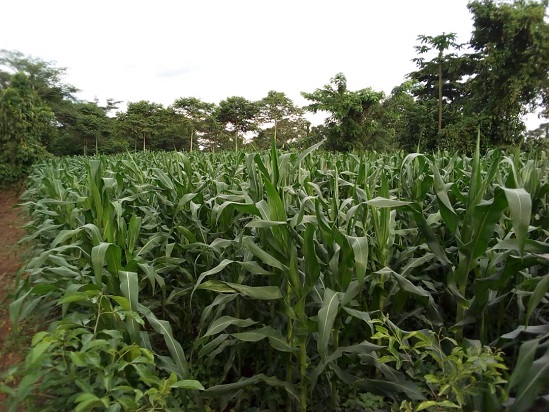The Uganda Meteorological Authority (UNMA) says that several parts of the country are expected to receive near average to above average rainfall.
Uganda generally experiences two major rainfall seasons: March-April-May(MAM) and September-October-November (SOND) as the first and second rainy season respectively. However, the northern region and parts of the eastern region usually experience a substantial rainfall during June-July-August (JJA) season.
In a September 2, 2024 seasonal rainfall outlook over Uganda, UNMA said that several parts of the country are expected to receive near average to above average rainfall. The SOND rainfalls, UNMA says are driven by a number of areas including the neutral phase of the Indian Ocean Diople (IOD) as well as the influence of the Congo air mass circulation, topographical features and large in land water bodies.
In view of the above, the weatherman said that the month of September is expected to experience wetter conditions compared to October and November. The cessation of rainfall is expected in December, 2024.
The Authority added that some parts of the cattle corridor areas of southwestern, central and northeastern regions are expected to experience near average to below average rainfall conditions during the forecast period. These areas include Kabale, Kisoro, Rukungiri, Kanungu, Rukiga, Rubanda, Bushenyi, Rubirizi, Mitooma, Buhweju, Sheema and Rwampara.
“These dry conditions over this region are expected to continue up to early September when the onset of the seasonal rainfall will get established with the peak around the late September to early October,” reads part of the outlook information. In Rwenzori sub region, the weatherman says that the region is currently experiencing isolated wain which is expected to continue and get established around early September. “The peak of the seasonal rainfall will get established by late September to early October,” says UNMA. Overall, near normal with a tendency to below normal rainfall conditions are expected during the forecast period in this region.
In the Central parts of Western (Masindi, Buliisa, Hoima, Kikuube, Kakumiro, Kyenjojo and Kyegegwa among others), UNMA says “rainfall that is being experienced over most parts of this region indicates the onset of the seasonal rainfall.”
“Peak rains are expected around late September to early October. The cessation of the seasonal rains is expected around late November to early December. Overall, near normal (average) with a tendency to above normal (enhanced) rainfall conditions are expected in this region,” adds the Authority.
In the Central and Lake Victoria region, some parts are currently experiencing occassion isolated thunderstorms signifying the onset of the seasonal rainfall. UNMA says that wet conditions are expected to set in during September reaching the peak around late September t early October. The cessation of rainfall is expected around mid to late November. Overall, UNMA says that near normal with a slight tendency to below normal rainfall conditions are expected to prevail over this region during the forecast period. In the Eastern region, the cessation of the seasonal rains is expected around mid to late November. The region is expected to receive average to enhanced rainfall. In the northeast, a gradual rainfall decline is expected leading to the cessation around mid to late October.
The northern region expects near normal with a tendency to above normal rainfall over the region.
Because of the above, UNMA says that there is a high likelihood of receiving near normal to above normal rainfall over most parts of the country. Some parts of the central southwesern and northeastern regions are expected to experience near normal to below normal rainfall. According to UNMA, “This will impact socio-economic activities, such as agricultural production and food security, health, and water resources.”
Therefore, water logging/flooding,leaching is likely to be high,especially in low-lying areas with poor drainage and compacted soils. Others are increased pest and diseases, increased soil erosion and loss of soil fertility in steep sloping lands, overgrazed or depleted soils. However, this also means that there will be sufficient water for production, increased crop yield boosted by higher rainfall, favourable temperatures and favourable conditions for fruiting in perennial crops like coffee (robusta) and bananas. In the crop sub sector, UNMA advises on timely planting at the onset of the rainfall and planting of improved high-yielding varieties among others. In the fisheries sub sector, UNMA notes that there will be increased flow of water into the ponds, dispersing wastes. However, UNMA warns that there will be increased siltation of ponds, especially for those near unstable shorelines/hillsides (affecting water quality and reducing oxygen levels). In the livestock sub sector, there will be increased vector and disease incidences and vectors (ticks and east coast fever,foot and mouth disease, tsetse fly and mosquitoes among others). However, there will abundant surface and ground water replenishing troughs and ponds increasing freely accessible drinking points for herds. This, UNMA says will come with vaccinations, timely deworming and targeted spraying for vector control.
In conclusion, UNMA says that the predicted rainfall requires action in sufficient time and in an appropriate manner to take advantage of the information. “This forecast should be used for decision making and planning in all rain-fed economic activities to improve the livelihoods and welfare for all our communities,” says the AG. Executive Director of UNMA, Dr. Bob Alex Ogwang.





